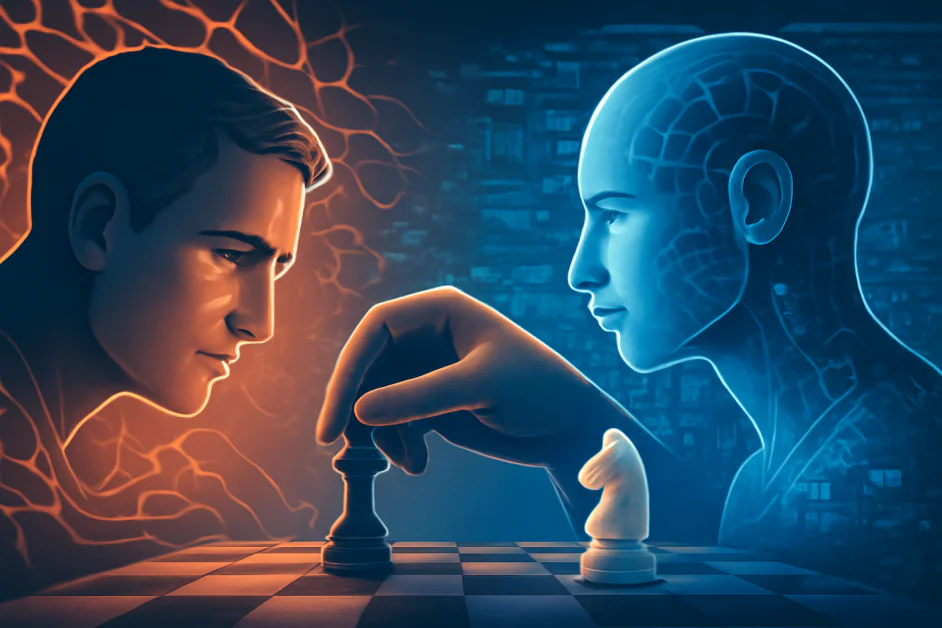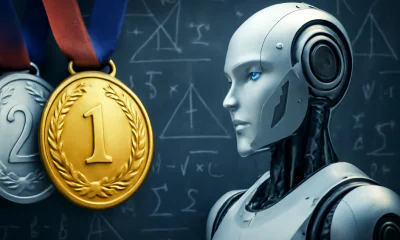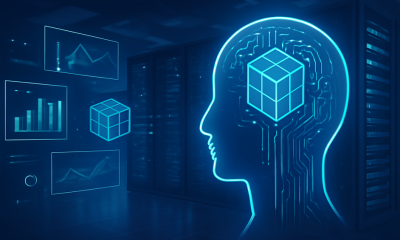人工智能
Why Competitions Are Becoming the New Standard for Testing AI

For many years, benchmarks like 影像网 用于计算机视觉和 胶 for natural language processing have been the main tools for evaluating AI. They offered a straightforward way to track progress and compare different models. But as AI systems have advanced, many of these benchmarks have been saturated, with models matching or even surpassing human-level performance. This challenge has raised the need for new methods that can better test the capabilities of AI. In response to this challenge, researchers are now turning to competitions as an alternative way for evaluating AI. Rather than relying on fixed datasets, AI models are now being evaluated through board games, coding competitions, math Olympiads, eSports, and robotics challenges. In these environments, models must adapt, reason, and create strategies to face new problems and opponents. This article examines the limitations of traditional benchmarks and highlights how competitions are emerging as a new standard for evaluating AI.
Why Traditional Benchmarks Fall Short
Traditional benchmarks have guided AI development for decades. They offer a standardized way to compare performance of the AI models. These datasets contained fixed inputs with clear targets which allow researchers to compare different approaches in a straightforward way. A model that performed better was considered more capable.
However, as AI systems have grown more powerful, these benchmarks have revealed fundamental limitations. The most obvious problem is benchmark saturation. When models achieve perfect or near-perfect scores, the test loses its ability to distinguish between stronger and weaker models. 研究表明, that many benchmarks reach saturation quickly, and this trend has become even more common in recent years.
Data contamination presents another 挑战. Many benchmark instances are available online and may have been included in training datasets. When a model solves a problem, it may be recalling an answer it has already seen during training. This creates an illusion of intelligence without demonstrating actual reasoning ability.
Some researchers have tried to solve this by using human evaluation. While it adds nuance, human evaluation also brings subjectivity and bias. These assessments are also time-consuming, expensive, and difficult to scale across multiple models. These limitations have created an urgent need for evaluation methods that can keep pace with rapidly advancing AI capabilities.
Why Competitions Offer a Better Approach
Competitions provide a dynamic testing environment that addresses many shortcomings of traditional benchmarks. They offer clear rules, defined objectives, and measurable outcomes that do not depend on subjective interpretation. Success is determined by transparent results that anyone can verify.
The most significant advantage of competitions is their natural ability to scale difficulty. As AI improves, the challenges automatically become harder. In games, stronger models face more sophisticated opponents. In mathematical contests, problems increase in complexity. In coding competitions, the algorithmic challenges grow more demanding. This self-scaling property ensures that evaluation remains relevant as technology advances.
Competitions also demand diverse cognitive skills. Strategic games require long-term planning and opponent modeling. Mathematical Olympiads test creative problem-solving and rigorous reasoning. Coding contests evaluate algorithmic thinking and implementation skills. Real-world challenges like Kaggle competitions assess practical problem-solving abilities across various domains.
Most importantly, competitions allow direct comparison with human performance. This characteristic provides a meaningful reference point that static benchmarks cannot offer. When an AI system competes in the International Mathematical Olympiad or plays chess against grandmasters, we gain insights into how machine intelligence compares to human capabilities.
The transparency of competitive evaluation also enables deeper analysis. Every move in a game, every step in mathematical proof, and every line of code can be examined to understand how AI systems approach problems. This openness transforms evaluation from simple scoring into a window for understanding decision-making processes.
Examples of AI in Competitions
Evaluating AI through competitions is not a new idea. In 2016, DeepMind 的 AlphaGo defeated Go world champion Lee Sedol, and its successor, 零度, defeated the reigning computer champion Stockfish by teaching itself the game of chess. In eSports, OpenAI's Dota 2 system (OpenAI Five) beat the world champion team in 2019, while DeepMind's AlphaStar achieved Grandmaster status in StarCraft II. These victories showed that AI systems can adapt and succeed in highly strategic, real-time environments.
More recently, researchers have developed AI models for academic competitions. In fact, 谷歌深度思维 和 OpenAI systems achieved a gold-medalist score in the International Mathematical Olympiad. In programming, 字母代码 tackled fresh Codeforces problems and ranked around the median human competitor. These results highlighted that AI systems can perform competitively in Olympiad-style reasoning contests.
Competition in robotics follows a similar approach. Events like 机器人世界杯, DARPA challenges, and XPrize tasks require teams to build agents that operate in real-world environments, from soccer-playing robots to autonomous vehicles. These competitive formats make progress measurable and allow direct comparison across systems.
What Competition-Based Testing Reveals
Competitions reveal aspects of intelligence that traditional benchmarks often miss. Generalization ability becomes immediately apparent when AI faces novel challenges it has never encountered. Unlike memorization-friendly benchmarks, competitions constantly present new scenarios that require genuine problem-solving skills.
Creative reasoning emerges as a crucial factor, particularly in mathematical and scientific competitions. AI must generate original insights and construct novel arguments to solve a problem it has never seen before. This creativity cannot be measured through pattern matching on fixed datasets.
Adaptability is an essential aspect of all competitive domains. Game-playing AI must adjust strategies based on opponent behavior. Contest-solving AI must modify approaches when initial attempts fail. This flexibility reflects real-world requirements where rigid responses often fail.
Robustness under novelty is another key factor of competition-based testing. The competitive environment constantly changes, which forces AI to deal with new situations and unexpected moves. A model that performs well under these conditions is more likely to be reliable and effective in real-world applications.
Finally, competitions provide a direct way to compare human-level reasoning with machine intelligence. By competing against human experts in a game or a problem-solving contest, AI systems are held to the highest standard. This characteristic provides a clear, aspirational target for the field rather than abstract performance metrics.
Challenges in Competition-Based Evaluation
While competition-based evaluation offers many benefits, it also faces various challenges. One concern is domain specificity. A chess champion may not be able to solve a complex mathematical problem. Success in a specific competition does not guarantee general intelligence. The field must find ways to combine results from multiple competitions to gain a more comprehensive understanding of an AI's overall abilities.
Standardization is another issue. While win-loss records are clear within a single game, comparing results across different types of competitions is difficult. For example, how do you compare a model's performance in a robotics challenge with its performance in a coding contest? Researchers are working to create frameworks that can unify these different types of outcomes into a fair assessment.
Finally, there is the issue of accessibility. While many competitions are open, some require significant computational resources or expertise that may not be available to all researchers, especially those from smaller institutions. Ensuring that these new methods of evaluation are inclusive is essential for the health and diversity of the field.
Broader Impact on AI Research
The rise of competition-based evaluation is already having a significant impact on how AI is developed. It encourages researchers to move away from simply training models on benchmarks toward building systems that can plan, reason, and adapt to new situations. This shift is crucial to making real progress toward more general forms of intelligence.
Competitive platforms also democratize evaluation. By making games and contests open to everyone, small research groups and individual developers can compete with large technology companies. This democratization encourages innovation from a broader range of people and institutions. Platforms like Kaggle, 国际数学奥林匹克, and programming contest sites provide accessible venues for testing AI capabilities.
Finally, lessons from competitive testing are directly influencing real-world applications. The ability to plan, adapt, and remain robust under pressure is highly valuable in fields like finance, transportation, healthcare, and defense. These domains require AI that can handle uncertainty, adapt to changing conditions, and deliver reliable performance.
底线
Competition-based evaluation is redefining how we measure AI progress. Unlike static benchmarks, competitions test adaptability, creativity, and real problem-solving under dynamic conditions. While challenges like standardization and accessibility remain, this shift pushes AI toward more robust, versatile, and human-comparable intelligence. It not only sharpens research but also accelerates the development of AI systems ready for real-world impact.












